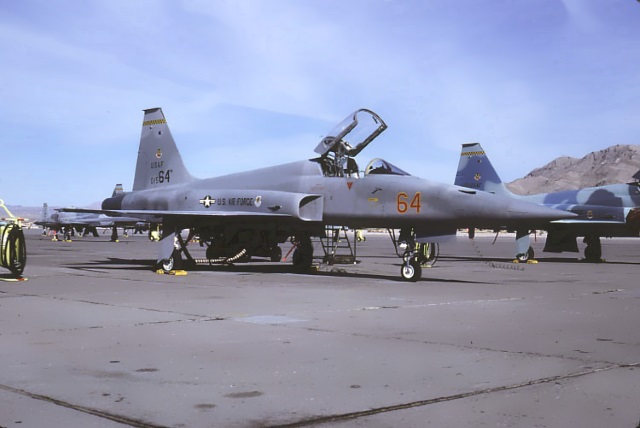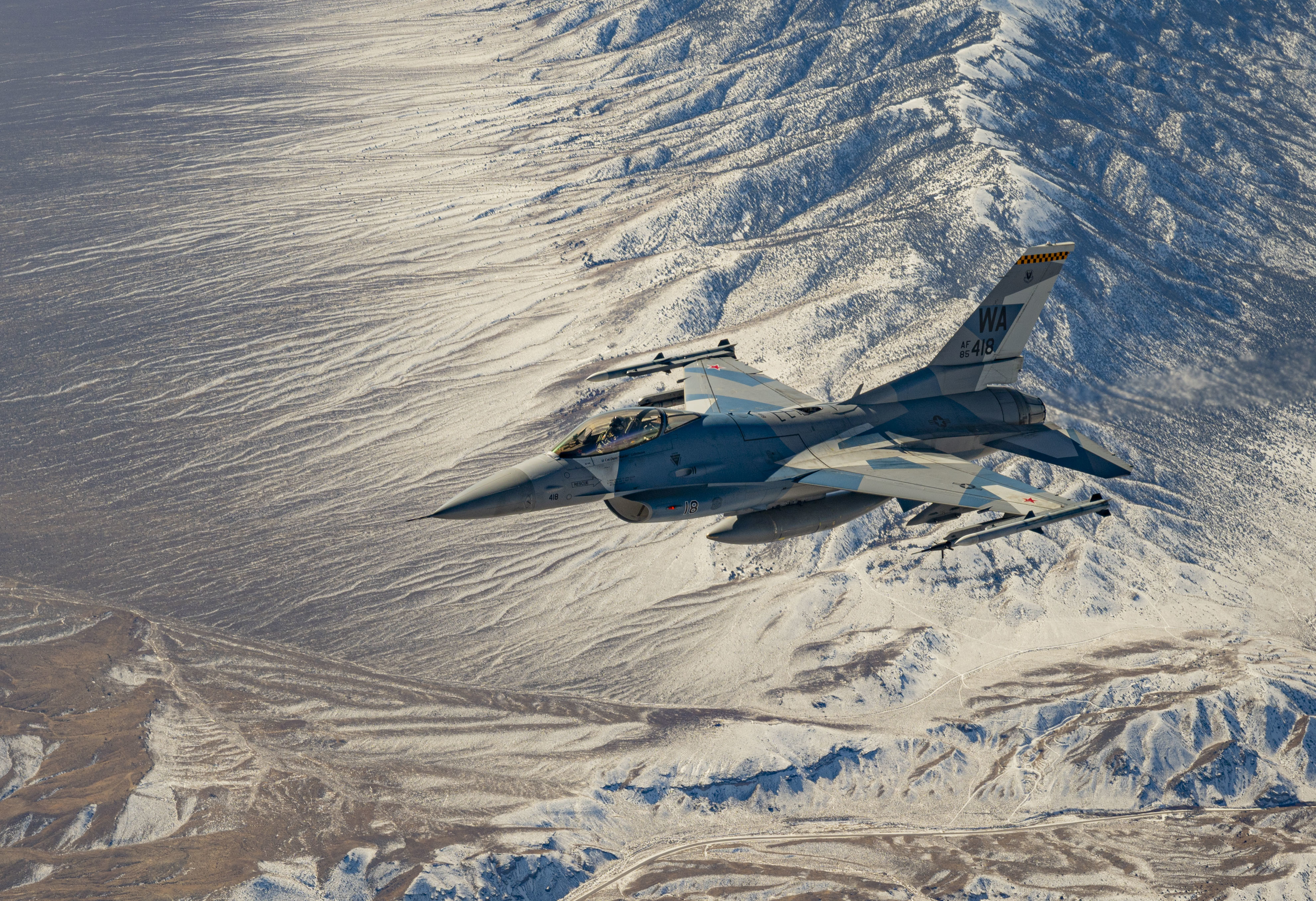Join the Hide community
Get access to live stream, lessons, the post exchange, and chat with other snipers.
Register
Download Gravity Ballistics
Get help to accurately calculate and scope your sniper rifle using real shooting data.

Install the app
How to install the app on iOS
Follow along with the video below to see how to install our site as a web app on your home screen.
Note: This feature may not be available in some browsers.
You are using an out of date browser. It may not display this or other websites correctly.
You should upgrade or use an alternative browser.
You should upgrade or use an alternative browser.
Aircraft camo, underside
- Thread starter lariat
- Start date
Thats what I needed. Thanks for the info.Military aircraft?
FS36375 was/is pretty standard.
Is there a specific aircraft in question?
Messerschmitt Bf 110G with camo on top and a pale yellow underside to imitate "skyglow":

Most examples of WWII aircraft I've seen (and post-WWII, of course) have undersides colored something between grey and light blue, to more-or-less match the sky in most weather conditions. I don't know if there was a particular color number back then or if it just depended on what paint was available. Probably a mix of both, since the Spitfire sand-and-spinach seemed to be particular shades and there was a standardized OD green. I know some night-fighters went with all-black to minimize visibility, or like that Bf110 tried to blend in with the sky around cities at night, with the yellowish-pink light diffusion.

Most examples of WWII aircraft I've seen (and post-WWII, of course) have undersides colored something between grey and light blue, to more-or-less match the sky in most weather conditions. I don't know if there was a particular color number back then or if it just depended on what paint was available. Probably a mix of both, since the Spitfire sand-and-spinach seemed to be particular shades and there was a standardized OD green. I know some night-fighters went with all-black to minimize visibility, or like that Bf110 tried to blend in with the sky around cities at night, with the yellowish-pink light diffusion.
The color of the sky
With how many white planes there are, it can be hard to pick out with stratus cloud layers
I’d say a light gray with a blue tint
With how many white planes there are, it can be hard to pick out with stratus cloud layers
I’d say a light gray with a blue tint
Messerschmitt Bf 110G with camo on top and a pale yellow underside to imitate "skyglow":

Most examples of WWII aircraft I've seen (and post-WWII, of course) have undersides colored something between grey and light blue, to more-or-less match the sky in most weather conditions. I don't know if there was a particular color number back then or if it just depended on what paint was available. Probably a mix of both, since the Spitfire sand-and-spinach seemed to be particular shades and there was a standardized OD green. I know some night-fighters went with all-black to minimize visibility, or like that Bf110 tried to blend in with the sky around cities at night, with the yellowish-pink light diffusion.
That
I was just about to mention this.
Somewhere, I think in Vintage, I posted a
Really cool Treatise on camouflage.
It’s changed a lot through the years and there are a lot of new things continually coming out, because it’s about tricking the brain, not matching a color.
So odd things like “dazzle camouflage” has real effectiveness. As do things like shadows or reflections or simply “moving” an object in one’s perception.
Camouflage is psychological warfare at its most elemental. That and physiological warfare. Combine those two and you really get to the root of hiding things.
Cool thread.
Sirhr
Really cool Treatise on camouflage.
It’s changed a lot through the years and there are a lot of new things continually coming out, because it’s about tricking the brain, not matching a color.
So odd things like “dazzle camouflage” has real effectiveness. As do things like shadows or reflections or simply “moving” an object in one’s perception.
Camouflage is psychological warfare at its most elemental. That and physiological warfare. Combine those two and you really get to the root of hiding things.
Cool thread.
Sirhr
Isn’t visual aircraft camouflage dependent on altitude? The higher the darker, lower lighter.
Look at nearly all modern air, they settled on greys and blacks.
You want flat colors that do not reflect, greys.
The things they paint white, are things they want seen.
Look at nearly all modern air, they settled on greys and blacks.
You want flat colors that do not reflect, greys.
The things they paint white, are things they want seen.
Isn’t visual aircraft camouflage dependent on altitude? The higher the darker, lower lighter.
Look at nearly all modern air, they settled on greys and blacks.
You want flat colors that do not reflect, greys.
The things they paint white, are things they want seen.
And speed, for lots of these modern high speed fighters, visual detection isn’t as much a concern as electronic detection.
And speed, for lots of these modern high speed fighters, visual detection isn’t as much a concern as electronic detection.
Emissions in the IR and visual bands are becoming more important now that reflections in the radio bands are minimal.
Find out what the California Hwy Patrol uses for their Cessnas in Northern California.....I never see those fuckers until it's too late.
Been putting together a library of 1/24 scale WWII Rubber Powered Free Flight flying model plans and printouts of color artwork for them. Running top 2 of all colors, undersides are painted in light blue or light gray.
Special purpose aircraft, like night fighters, use more task-associated colors; like Black and Dark Sea Blue.
Greg
Special purpose aircraft, like night fighters, use more task-associated colors; like Black and Dark Sea Blue.
Greg
This is a very long time ago when I was in the PACAF Aggressor squadron (26th TFTAS, 3rd TAC Fighter Wing, 13th AF, PACAF, USAF).
We had all kinds of weird "Warsaw block" paint schemes...but two...one a pale mottled grey we called Ghost and a multi-shade blue just did the most incredible disappearing act when engaged in air to air. Especially the Ghost
Now, at this time...just after VN...there was a study called AIMVAL/ACEVAL that determined that despite all of the queertrons McNamarra shoved into our smoking F-4's (AF...Navy's didn't smoke...fucking idiots) it appeared that most engagements resulted in the same kind of visual dogfight as in WW I/II/Korea. Now, at that time F-4E's were our front line air superiority fighter and they had a pulse radar with a range gate that could be defeated...thus defeating AIM-7 radar missiles and getting into a dogfight (well, that and the VIS ID ROE).
This probably has zero to do with modern Doppler radars and munitions....but, since you asked....these aircraft were very hard to see


We had all kinds of weird "Warsaw block" paint schemes...but two...one a pale mottled grey we called Ghost and a multi-shade blue just did the most incredible disappearing act when engaged in air to air. Especially the Ghost
Now, at this time...just after VN...there was a study called AIMVAL/ACEVAL that determined that despite all of the queertrons McNamarra shoved into our smoking F-4's (AF...Navy's didn't smoke...fucking idiots) it appeared that most engagements resulted in the same kind of visual dogfight as in WW I/II/Korea. Now, at that time F-4E's were our front line air superiority fighter and they had a pulse radar with a range gate that could be defeated...thus defeating AIM-7 radar missiles and getting into a dogfight (well, that and the VIS ID ROE).
This probably has zero to do with modern Doppler radars and munitions....but, since you asked....these aircraft were very hard to see


And with modern aircraft speeds, you're gonna want to either blend in with the sky the most (and so camo will be blues or greys, or a single base color), or have camo that'll help more for when they're sitting on tarmac, which can be painted in a similar pattern so that looking at the airbase from above will make it harder to spot what's a plane and what isn't, at least with a basic camera or night vision. You MIGHT fly over another plane in midair and at a quick glance not notice it's there because it blends in with the ground hundreds of feet below you, but unless you're constantly looking below your plane (and I don't know but I don't think that'd be too easy to do), an ambushing aircraft being camouflaged at high speed is the least of your worries. Your warning systems should let you know there's something there that isn't meant to be.And speed, for lots of these modern high speed fighters, visual detection isn’t as much a concern as electronic detection.
Thai Corsairs on a runway:
F16 circa 2021 with nice blue/grey splinter camo, not far off from what @Baron23 describes. It kinda blends with the Nevada landscape below, but if you're zipping past it at a higher altitude, camo might not matter so much because you'll just see a blue-grey mass if you notice it at all:

By comparison, this Israeli F16's camo is obviously meant to blend with the Israeli landscape, but again at modern flying speeds, it's probably to keep them less-visible on the ground than while in flight:

Reactivate the 65th??? Dang, I've been out of it for a long time. Used to be the 64th/65th was the school house for PACAF and USAFE Aggressors as well as active adversary support for red flag, etc.
Never new that they deactivated the 65th. And yeah, that's a lot more a/c than we had....but we really were the last of the great flying clubs. We were attached to an F-4 wing but really just did our own thing. It was wonderful....but memories do tend to get that halcyon glow with the passage of lots of time! haha
Cheers and thanks for the vid.
Similar threads
- Replies
- 6
- Views
- 273


